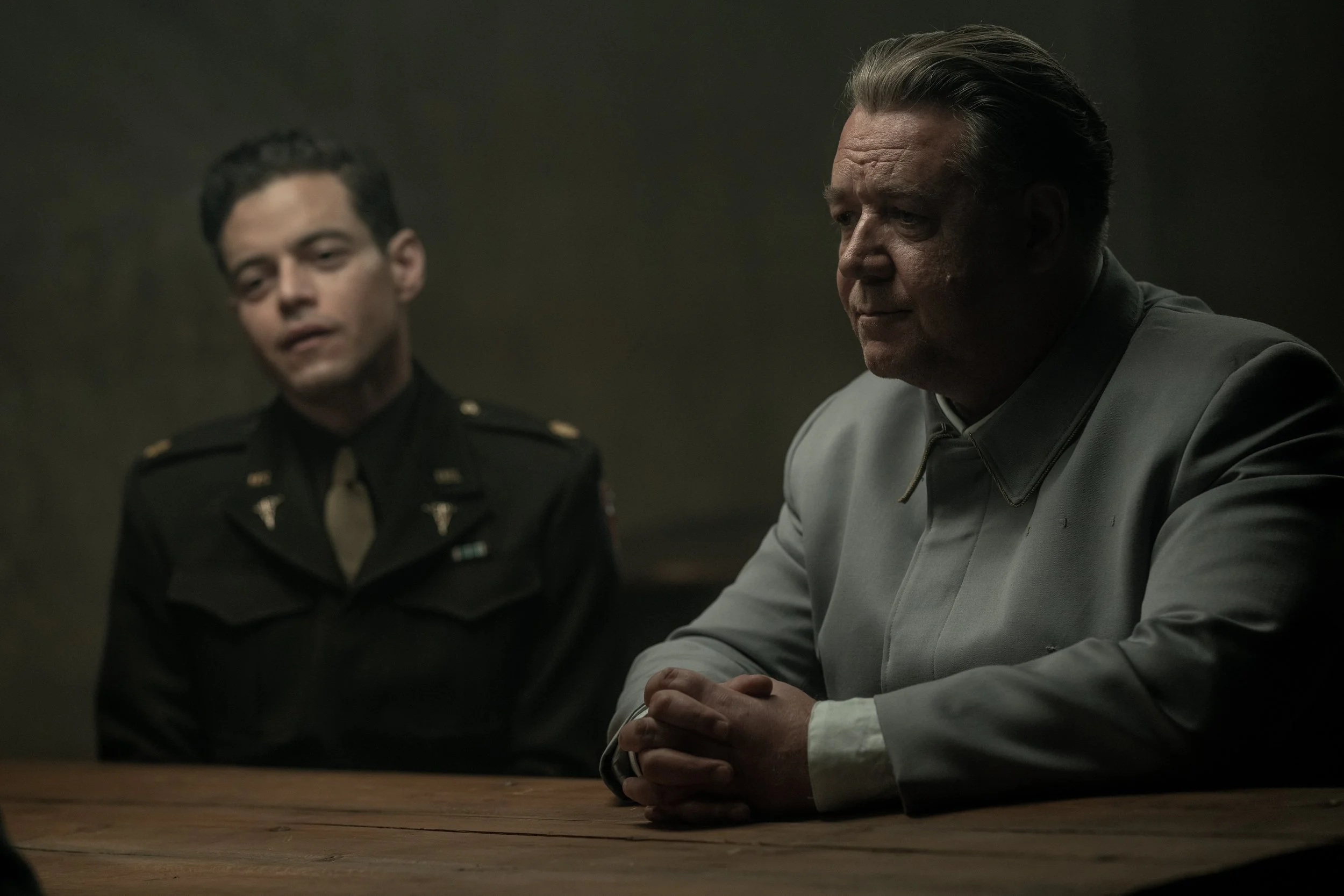Nuremberg: The Film Itself is a Bit of a Trial
By Liz Braun
Rating: C+
Nuremberg should be a riveting movie. The cast is great. The subject matter is fascinating. And yet …
In real life, the Nuremberg trials ran for about a year, starting in November of 1945. They held the attention of the entire world.
At the end of WWII, with Hitler and a few other henchmen — Himmler and Goebbels among them — dead by suicide, dozens of other Nazi leaders were put on trial in Nuremberg by a special tribunal made up of representatives of the Allied nations. The charges included war crimes and crimes against humanity. The point of a public trial versus immediate hanging — a more expedient option — was to show the world the evil done by the Nazi regime so that it might never happen again.
Rami Malek as Lt. Col. Douglas Kelley, Russell Crowe as Hermann Göring in Nuremberg
Wishful thinking.
The Nazi bigwigs put on trial included Hermann Göring, Rudolf Hess, Joachim von Ribbentrop and Wilhelm Keitel; as Hitler’s chosen successor (at least until 1945), Göring was the grand fromage Nazi tried at Nuremberg.
The film Nuremberg is based on Jack El-Hai’s 2013 non-fiction book, The Nazi and the Psychiatrist, which concerns the relationship between Göring and Dr. Douglas Kelley, chief psychiatrist in the U.S. Army’s European Theater. Dr. Kelley was brought in to ensure that the Nazis under arrest were competent to stand trial.
Nuremberg stars Russell Crowe as Göring and Rami Malek as Dr. Kelley, with Michael Shannon playing Supreme Court Justice Robert Jackson — the architect of the trials. Nothing like the Nuremberg trials had ever happened before, and Jackson helped establish the International Military Tribunal.
Richard E. Grant plays fellow prosecuting counsel Sir David Maxwell-Fyfe; Colin Hanks, John Slattery and Leo Woodall are also in the cast.
The film follows Justice Jackson as he does the difficult work required to make the trials a reality. At the same time, it follows the developing relationship between Göring and Dr. Kelley.
About 20 minutes in, Kelley determines that he could get a great book out of this experience with the Nazis. He might shine a light on the psychology that created the Holocaust — “we could make sure nothing like this ever happens again!” — and he could also make a lot of money doing it.
Dr. Kelley appears to be a bit of a loose cannon. Göring is complex and charismatic. The relationship between the war criminal and the doctor is complicated, moving from doctor-patient to ostensible friendship to Dr. Kelley’s psychological insights being used against Göring at trial. The problem is, it’s difficult to care.
The ponderous storytelling is such that you’re always aware you’re watching a movie. Visually, Nuremberg takes great pains to set itself in a particular past, that olde-timey past underlined by exploding flashbulbs and fake archival black and white footage. It’s more like an olde-timey cinema past than anything actually historical though; witness a soldier peeing on a swastika as the movie opens. There seems to be a lot of acting going on. There is overwrought music to emphasize it, too.
In the middle of Nuremberg, actual footage from concentration camps is introduced in the courtroom: real images of dead bodies piled up on the ground, of skeletal survivors, of the ovens, of bodies being bulldozed into mass graves.
The juxtaposition of these harrowing pictures and their film fakery setting is disconcerting in the extreme. The point of Nuremberg is to make clear that the atrocities of WWII were preventable, but happened because people allowed them to — because, “They didn’t stand up until it was too late” as one character says.
It’s already too late, as you will have noticed.
Nuremberg. Directed and co-written by James Vanderbilt. Starring Russell Crowe, Rami Malek, Michael Shannon, Richard E. Grant. In theatres Nov. 7.


